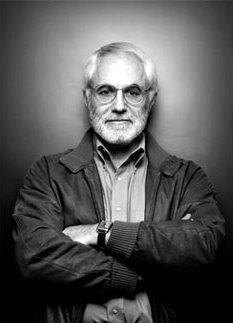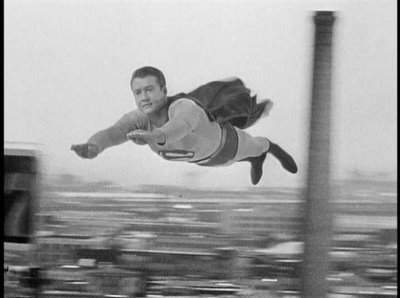
I'm sure I'm not the only one who tends to think of THE ADVENTURES OF SUPERMAN as two seasons -- the Phyllis Coates season and the Noel Neill season -- rather than as the six seasons there actually were. Accustomed as I've been to seeing this beloved series out of sequence over the years, catch as catch can, I found it interesting to watch Warner Home Video's
THE ADVENTURES OF SUPERMAN - THE COMPLETE SECOND SEASON chronologically to identify the specific character and points of distinction specific to these 26 episodes. (27 if you include the 1954 bonus non-series episode, "Stamp Day for Superman.")
These episodes, it should be mentioned, were filmed in 1952 -- two years after the first season. Only John Hamilton's Perry White is noticeably unchanged. George Reeves has a beefier look and his hair is more threaded with gray. As Jimmy Olsen, Jack Larson looks less like a young adult and more like a slumming adult actor playing dumb; although identified as a "cub reporter," Jimmy now seems to be more of a staff photographer, lugging around a huge camera and (though no one notices but us) grinning beamishly as all the best photo opportunities pass him by. (In "Around the World with Superman," he doesn't snap a single shot of Superman cradling the little girl he flies around the world as the winner of a Daily Planet contest!) The original Lois Lane, Noel Neill -- who starred opposite Kirk Alyn in the Columbia serials SUPERMAN (1948) and ATOM MAN VS. SUPERMAN (1950), has her fans and Superman fandom is divided by those who favor her "sweet" approach to the no-nonsense ways of the first season's Phyllis Coates.
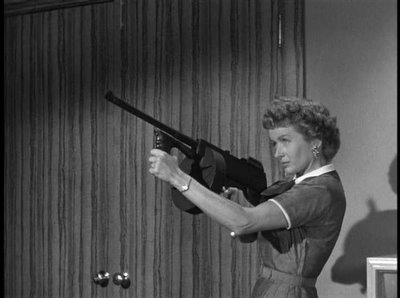
I bracket "sweet" in quotes because that's not how I see Neill's Lois Lane at all, especially after watching these 26 episodes in sequence. In all fairness to Neill, she plays the role as it was written -- very inconsistently. On the one hand, Lois regularly scoops Clark Kent (because she's able to get and file the story while he's out making the news), yet the tone she most often takes with him is one of pointed resentment. This season, Lois has wised-up to Kent's double life and spends many episodes trying to expose his secret identity; of course, he outsmarts her every time. And yet, in a handful of episodes, Lois seems to forget all this and scoffs at any suggestion that someone like Clark, always running away at the first sign of danger, could possibly be Superman! She does have sweet moments, but they usually follow remarks or behavior so snide or so waspish they give one whiplash. A bit bipolar, this Lois Lane, and it's very hard to imagine how Phyllis Coates would have handled the part had it been written this way.
The series was produced to peddle Kellogg's breakfast cereal and producer Whitney Ellsworth bowed to sponsor pressure to make the program less violent in its second season. Therefore, the hardboiled stance of the first season shows is replaced here by a more wholesome, occasionally goofy approach that somewhat approximates the feel of what the DC Comics SUPERMAN had become. Stories like "The Dog Who Knew Superman" (a gang moll's dog learns Superman's true identity from a driving glove Clark Kent wears in no other episode), "The Machine That Could Plot Crimes" (an absent-minded professor invents a computer named Mr. Kelso, which is innocently put to the task of devising perfect crimes), "The Clown Who Cried" (a circus clown agrees to perform on a Daily Planet telethon, but is blackjacked and replaced by an ex-con friend when he learns the show stands to accept thousands in cash donations), "Perry White's Scoop" (editor White, fed up with his trouble-prone reporters, decides to show them how it was done back in the day... getting into trouble of his own), "The Golden Vulture" (Lois and Jimmy run afowl of a modern-day pirate) and many other episodes could have easily been adapted as DC stories.
But the season is best remembered (and rightly so) for a handful of episodes that play outside the pocket. The most celebrated of the bunch, "Panic in the Sky" chronicles Clark Kent's battle with amnesia after Superman vanquishes an asteroid threatening to slam into Earth. There's not a kid alive who didn't see this and scream with apprehension as Kent began to unbutton his shirt, revealing the S of his Superman costume, in the presence of Jimmy Olsen. Benefiting from a pensive, apocalyptic mood from the outset, the show gives the immediate impression of something unusual, its tenor turning most worrisome when a woozy Kent crashes through the glass door of his shower. It's in the aftermath of this scene that the show takes one of its most credibility-testing turns, as we see Kent in bed, without his glasses, being visited by his co-workers, who see his bare face and remark on the fact that he emerged from all that broken glass without a scratch, and can't put the facts together like two and two. Aside from this fault, the episode isn't quite so nerve-teasing or tension-stretching as it's remembered to be; Superman's memory is recovered fairly quickly, all told -- but nowhere else in the series is Superman quite so vulnerable.

(By the way, I now have a theory about why Lois and Jimmy, despite suspecting Clark of being Superman, can never recognize that the two are one and the same even when his glasses are off. In short, Kryptonians are smarter than Earth people -- and when we watch THE ADVENTURES OF SUPERMAN or any other SUPERMAN dramatization, we do so with the intelligence of a Kryptonian. That's why Clark winks at us at the end of so many episodes; only he, of all the characters, knows that we're watching. Far-fetched? Well, so is the fact that no one recognizes Clark Kent as Superman when he's not wearing his glasses, as happens at least twice in Season 2.)
"Panic in the Sky" can be viewed on disc with an audio commentary by Jack Larson and Noel Neill, but it's a disappointment; Larson does almost all of the talking, but even his contribution is sporadic. After the two of them fall into a long silent patch, Larson chides Neill and himself, laughing "We're not commenting! We're not commenting!" It doesn't seem to occur to either of them that the buyers of this set might like to know more about George Reeves, or if they were aware that this episode was something special as they were filming it. These two sorely needed a moderator and it was a failure of the disc producer not to provide one.
A similar, equally commendable episode (which actually precedes "Panic in the Sky") is "Superman in Exile," which finds The Man of Steel physically contaminated by radiation after bravely placing himself between Metropolis and a pending atomic disaster. It's curious that this episode doesn't have the following of its successor, because the later episode basically reprises its tensions while putting Superman's secret identity more solidly on the line; even here, though, Lois and Jimmy show signs of getting wise as they notice that Superman's exile from Metropolis has coincided with Clark's disappearance. Similarly, "The Defeat of Superman" dramatizes his first series encounter with the element known as Kryptonite. When you stop to think about it, much of Season 2 is all about "mortal men" resenting Superman and wanting to take him down a notch or ten; the crooks want him dead or disabled, Lois and Jimmy want him unmasked, even his own acts of altruism conspire to deprive him of his effectiveness as a crime-fighter, robbing him of his powers, his memory, his ability to interact with others.
 One of my own favorite episodes of Season 2 is the quirky "Lady in Black." A send-up of the mystery genre -- this episode is in the same spirit as Season 1's "The Haunted Lighthouse," with a wide-eyed Jimmy Olsen alert to some strange and inexplicable goings-on in his aunt's apartment building. These include the arrival of melodramatic characters that seem to have stepped out of the mystery novel ("The Lady in Black") Jimmy is reading, so his cries of "wolf" initially go unheeded. Virginia Christine (destined to play an Olsen of her own in future Folger's coffee commercials) plays a dual role of sorts, and the episode is adorned with a number of oddball touches, including a weird surrealist painting in Jimmy's aunt's apartment. It initially sports one staring eye... then it has two... and in the final shot, we see the second eye winking at the viewer! There's also a lingering shot of a clown painting at the end of Act 1, which I've never fully understood till now. In Act 2, we see Christine unloading a sack of groceries and the first thing she takes out is a box of Kellogg's Sugar Smacks -- with what looks like the same clown on the box! Evidently, the significance of the painting at the end of Act 1 was that it was a product-placement lead-in to a Kellogg's commercial!
One of my own favorite episodes of Season 2 is the quirky "Lady in Black." A send-up of the mystery genre -- this episode is in the same spirit as Season 1's "The Haunted Lighthouse," with a wide-eyed Jimmy Olsen alert to some strange and inexplicable goings-on in his aunt's apartment building. These include the arrival of melodramatic characters that seem to have stepped out of the mystery novel ("The Lady in Black") Jimmy is reading, so his cries of "wolf" initially go unheeded. Virginia Christine (destined to play an Olsen of her own in future Folger's coffee commercials) plays a dual role of sorts, and the episode is adorned with a number of oddball touches, including a weird surrealist painting in Jimmy's aunt's apartment. It initially sports one staring eye... then it has two... and in the final shot, we see the second eye winking at the viewer! There's also a lingering shot of a clown painting at the end of Act 1, which I've never fully understood till now. In Act 2, we see Christine unloading a sack of groceries and the first thing she takes out is a box of Kellogg's Sugar Smacks -- with what looks like the same clown on the box! Evidently, the significance of the painting at the end of Act 1 was that it was a product-placement lead-in to a Kellogg's commercial!
Another Larson/Neill commentary (a better one) accompanies "Semi Private Eye," which happens to be Larson's favorite episode. It features a guest performance by THE MALTESE FALCON's Elisha Cook, Jr. as private detective Homer Garrity, but Larson favors the episode because it gave him a chance to do comedy. When Lois and Jimmy decide to hire a private detective to uncover Clark's possible dual identity, a gunman intrudes on their appointment. Lois and Homer are kidnapped, leaving Jimmy to indulge his fantasies of being a shamus and saving the day. Larson mugs his way through the episode shamelessly, doing what is probably one of the earliest Bogart impressions on record... and one of the few to incorporate James Cagney's teeth-baring, drawers-hitching mannerisms at the same time. Larson recounts later meeting Bogart, who seemed eager to meet him -- so perhaps Bogie saw this episode and appreciated the take-off; he also talks about "Cookie," who became a personal friend as a result of this appearance.
 While not a particularly distinguished episode, "Semi Private Eye" gives Larson a chance to do something different... as does "The Face and the Voice" where George Reeves is concerned. Here he plays his usual roles, and also that of a meatball ex-boxer who undergoes plastic surgery and diction lessons to imitate The Man of Steel in a series of robberies that leave the real Superman questioning his sanity. Kids might suppose that Reeves was showing extraordinary range as an actor by playing a character so unlike the urbane Clark Kent and Superman, but his performance is embarrassingly broad -- but the series offered him no time to refine it. As Larson mentions in the "Semi Private Eye" commentary, nearly all the scenes that made it into the show were first takes.
While not a particularly distinguished episode, "Semi Private Eye" gives Larson a chance to do something different... as does "The Face and the Voice" where George Reeves is concerned. Here he plays his usual roles, and also that of a meatball ex-boxer who undergoes plastic surgery and diction lessons to imitate The Man of Steel in a series of robberies that leave the real Superman questioning his sanity. Kids might suppose that Reeves was showing extraordinary range as an actor by playing a character so unlike the urbane Clark Kent and Superman, but his performance is embarrassingly broad -- but the series offered him no time to refine it. As Larson mentions in the "Semi Private Eye" commentary, nearly all the scenes that made it into the show were first takes.
The season closer, "Around the World with Superman", openly courts melodramatic sentiment with the story of a Daily Planet children's contest, whose winner will be flown around the world in the arms of Superman. The winner turns out to be a hardened but trusting little blind girl, who enters the contest in her mother's name, wanting to win the trip for her. It's a sweet and likeable episode, but it never answers the question of how the blind girl hand-wrote her winning entry, stamped and mailed it without her mother's knowledge. Furthermore, there is the trip itself, whose details fly in the face of earthly geography as we know it. Superman takes off from Metropolis (presumably on the East Coast and analogous to New York City), is immediately over the Atlantic Ocean, then London... Paris... Arabia... but then they are suddenly flying over New York -- and Superman tells the little contest winner that they aren't home yet, that there's still a big country to cross! Not only does this posit Metropolis on the West coast (as those who recognize the Daily Planet Building as Los Angeles City Hall always suspected), but it suggests that Superman either turned back before flying over Russia (!) or that the United States somehow got turned upside down while he was in flight (!!). The insanity is somewhat salvaged by a wonderful moment between George Reeves and Noel Neill, alluding to the otherwise unspoken "Lois Lane as Superman's Girlfriend" angle, that is the perfect capper for the season and this box set.
Whereas Warner Home Video's COMPLETE FIRST SEASON set reflected great attention paid to its digital restoration, the COMPLETE SECOND SEASON evinces less blood, sweat and tears. A noticeable splice in "Around the World with Superman" pinpoints the omission of a fondly-remembered moment where Superman uses his X-ray vision to determine the cause of the little girl's blindness. It wasn't the only such splice I noticed in the set, and one episode (sorry, I failed to note the specifics) recounts important plot points that were not shown. The picture and sound quality is very good, though not exceptional. On the plus side, "The Face and the Voice" -- last seen on a Warner/Image Entertainment laserdisc where the voice-training scene ("I look like Superman, why don't I talk like Superman? I look like...") was presented in absolutely horrible quality -- happily looks every bit as good as the other episodes.
Rounding out the COMPLETE SECOND SEASON are a nice sidebar on Noel Neill (with sound bytes from Neill, Larson, and SUPERMAN scholar Gary Grossman) and the aforementioned "Stamp Day for Superman," a US Defense Bonds promotion filmed in the form of an ADVENTURES OF SUPERMAN episode. The episode carries no screen credits, but it's pretty good, with some unusual dramatic choices (check the scene of Superman conferring with the jewel thief who reconsiders his crime) and some fairly witty dialogue (check Clark and Lois' window-shopping banter). Pay no attention to the internet talk about the episode's poor quality; compared to the other examples in this set, true, it's not as bright or as sharp, but this is the best-looking copy of this PD eyesore I've seen in 25 years of video viewing. In fact, I wouldn't call it an "eyesore" at all.
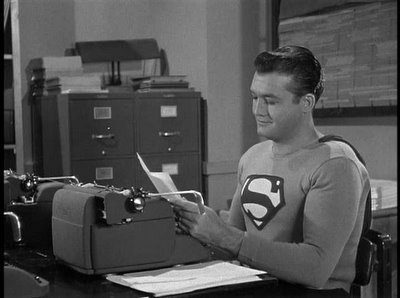
Another random thought or two... On DVD, it becomes fairly obvious in "The Clown That Cried" that William Wayne is playing both clown roles most of the time, doubling for actor Peter Brocco, who is supposedly disguised as him. Also, I don't know if "My Friend Superman" was the last episode shot for this season, but the food fight that ends the show would have been a great stress-relieving way to conclude the stretch. The scene has the air of a wrap party. I should also mention that Warner's screen menus are a delight. They actually tell an archetypal Superman story in a nutshell.
Season 2 marked the end of Superman's television adventures in black-and-white. The third season, only 12 episodes long, saw a transition to color and -- for the most part -- a significant brain-drop. We're talking "The Bully of Dry Gulch" and "Flight to the North," the episode where Chuck Connors plays backwoods clodhopper Sylvester J. Superman. Nevertheless, THE ADVENTURES OF SUPERMAN would always retain its charm, which was specifically the charm of its cast -- particularly George Reeves, who remains for many the definitive Superman -- and its increasingly wacky sense of fantasy.
Although I find myself bringing a stronger critical standard to bear on these episodes on DVD than I've ever done in a lifetime of enjoying them on television, I know exactly how to remind myself of what a wonderment this set really is. All I need to do is think back to a certain Christmas in my childhood when one of my gifts from Santa was a Kenner Give-A-Show Projector. One of the little films that came with the set was a reel of THE ADVENTURES OF SUPERMAN; I think it was a condensed version of the final episode, "All That Glitters." I can remember projecting that film, over and over, all Christmas Day, on the wall inside my bedroom closet (the darkest place I could find in the daytime) -- incredulous that something had been invented that allowed me to watch Superman fly, forwards and even backwards, as much as I wanted to.
 It may be my job to be critical, but owning this entire season of ADVENTURES OF SUPERMAN episodes on DVD beats that childhood memory all hollow -- and don't I know it.
It may be my job to be critical, but owning this entire season of ADVENTURES OF SUPERMAN episodes on DVD beats that childhood memory all hollow -- and don't I know it.
 A few days ago, the world changed in a subtle but significant way. Krzysztof Kieslowski's THE DOUBLE LIFE OF VÉRONIQUE (1991), starring the celestial Irène Jacob (pictured above), was released somewhere in the world on DVD. In France, specifically; one of its two countries of the heart. Those who feel as strongly about this story of metaphysical longing as I do may want to go straight to Amazon.fr and order the region-free PAL French import, released by MK2. The feature and all of the extras include English subtitle options, which suggests that the imminent UK release from Artificial Eye will likely be utilizing the same master. The big difference here is that the first 20,000 copies of the MK2's LA DOUBLE VIE DE VÉRONIQUE include an actual six-frame strip of film from a 35mm print. I'm indebted to reader Jason Minnix for the tip -- I ordered my copy straight-away.
A few days ago, the world changed in a subtle but significant way. Krzysztof Kieslowski's THE DOUBLE LIFE OF VÉRONIQUE (1991), starring the celestial Irène Jacob (pictured above), was released somewhere in the world on DVD. In France, specifically; one of its two countries of the heart. Those who feel as strongly about this story of metaphysical longing as I do may want to go straight to Amazon.fr and order the region-free PAL French import, released by MK2. The feature and all of the extras include English subtitle options, which suggests that the imminent UK release from Artificial Eye will likely be utilizing the same master. The big difference here is that the first 20,000 copies of the MK2's LA DOUBLE VIE DE VÉRONIQUE include an actual six-frame strip of film from a 35mm print. I'm indebted to reader Jason Minnix for the tip -- I ordered my copy straight-away.





 One of my own favorite episodes of Season 2 is the quirky "Lady in Black." A send-up of the mystery genre -- this episode is in the same spirit as Season 1's "The Haunted Lighthouse," with a wide-eyed Jimmy Olsen alert to some strange and inexplicable goings-on in his aunt's apartment building. These include the arrival of melodramatic characters that seem to have stepped out of the mystery novel ("The Lady in Black") Jimmy is reading, so his cries of "wolf" initially go unheeded. Virginia Christine (destined to play an Olsen of her own in future Folger's coffee commercials) plays a dual role of sorts, and the episode is adorned with a number of oddball touches, including a weird surrealist painting in Jimmy's aunt's apartment. It initially sports one staring eye... then it has two... and in the final shot, we see the second eye winking at the viewer! There's also a lingering shot of a clown painting at the end of Act 1, which I've never fully understood till now. In Act 2, we see Christine unloading a sack of groceries and the first thing she takes out is a box of Kellogg's Sugar Smacks -- with what looks like the same clown on the box! Evidently, the significance of the painting at the end of Act 1 was that it was a product-placement lead-in to a Kellogg's commercial!
One of my own favorite episodes of Season 2 is the quirky "Lady in Black." A send-up of the mystery genre -- this episode is in the same spirit as Season 1's "The Haunted Lighthouse," with a wide-eyed Jimmy Olsen alert to some strange and inexplicable goings-on in his aunt's apartment building. These include the arrival of melodramatic characters that seem to have stepped out of the mystery novel ("The Lady in Black") Jimmy is reading, so his cries of "wolf" initially go unheeded. Virginia Christine (destined to play an Olsen of her own in future Folger's coffee commercials) plays a dual role of sorts, and the episode is adorned with a number of oddball touches, including a weird surrealist painting in Jimmy's aunt's apartment. It initially sports one staring eye... then it has two... and in the final shot, we see the second eye winking at the viewer! There's also a lingering shot of a clown painting at the end of Act 1, which I've never fully understood till now. In Act 2, we see Christine unloading a sack of groceries and the first thing she takes out is a box of Kellogg's Sugar Smacks -- with what looks like the same clown on the box! Evidently, the significance of the painting at the end of Act 1 was that it was a product-placement lead-in to a Kellogg's commercial! 

 It may be my job to be critical, but owning this entire season of ADVENTURES OF SUPERMAN episodes on DVD beats that childhood memory all hollow -- and don't I know it.
It may be my job to be critical, but owning this entire season of ADVENTURES OF SUPERMAN episodes on DVD beats that childhood memory all hollow -- and don't I know it. 



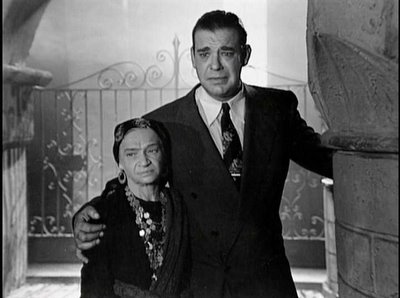



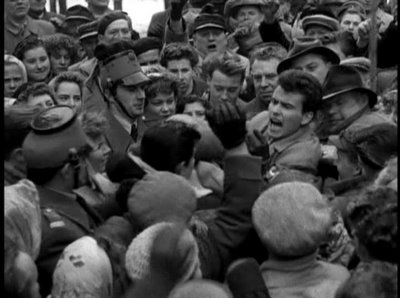
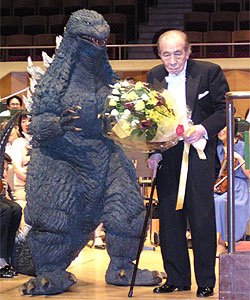
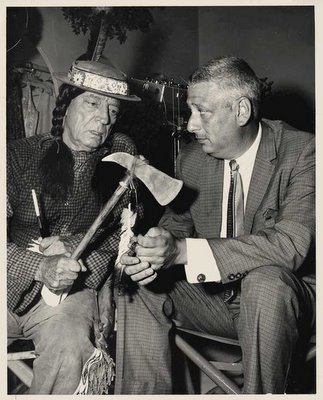
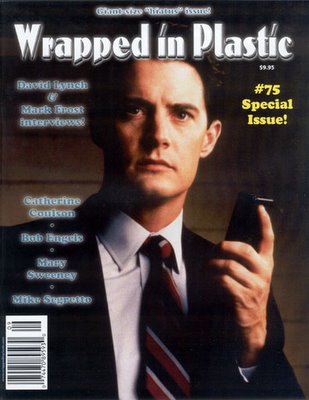
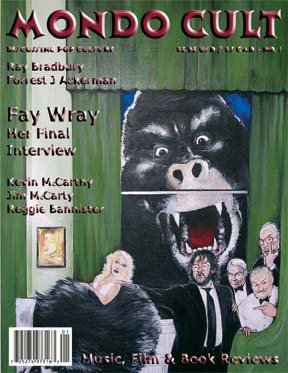 Given that print magazines seem to be dropping like flies, it's all the more admirable to see a new one preparing for take-off. Jessie Lilley, the former publisher of SCARLET STREET and WORLDLY REMAINS, is now taking wing as the editor-in-chief of a new magazine,
Given that print magazines seem to be dropping like flies, it's all the more admirable to see a new one preparing for take-off. Jessie Lilley, the former publisher of SCARLET STREET and WORLDLY REMAINS, is now taking wing as the editor-in-chief of a new magazine, 

 Consequently, the Charlton Comic of OFF ON A COMET promised in the ad also never happened, but some of us kids had this nifty Classics Illustrated adaptation.
Consequently, the Charlton Comic of OFF ON A COMET promised in the ad also never happened, but some of us kids had this nifty Classics Illustrated adaptation.